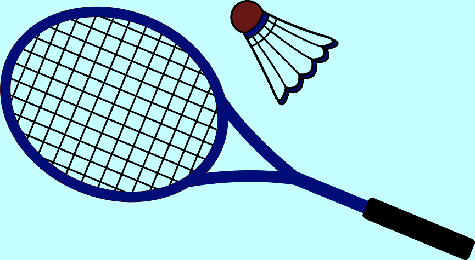
Badminton Racket for beginners
With so many different kinds of badminton racket available today it can be challenging to know which one to pick. There are a wealth of manufacturers out there all trying to get you to buy their products, and it is easy to spend money on a top rated racket because of clever marketing tricks. Just because something costs a lot of money, it doesn't mean it will suit your game. A lot of beginners and even intermediate players fall for this trick. The badminton companies are very good at promoting their stuff, and may not care if you buy the wrong one for your game.
The most important thing to remember is that you have to get the racquet that suits you and only you. Ignore the latest must have desgins, because if you are just starting out you may find your game will be worse off. They can do more harm than good in most cases. A beginner needs a cheap racket because while you are learning your skills there is no need to worry about flex, weight and balance. All these terms will come later as you get to know what they mean, and what they can bring to your game. All you need to do is concentrate on just playing the game and enjoying yoursefl in the process.
Badminton Racket Balance
The balance comes in three forms, you can have a head heavy, head light, or an even balance. The terms are pretty straightforward to understand and grasp. As a rule, the cheap rackets are head heavy because the materials used are steel, which is very heavy compared to the modern carbon fiber rackets on the more expensive kinds. Head heavy means more weight is placed at the top. Head light is the opposite, and the weight is found closer to the handle and the shaft. Even balance is where the racket has a neutral feel.
Now, the type of player you are can determine which balance you should go for. Power players like to smash the shuttle hard, and a head heavy balance will generate a bit more power for these players because at the point of impact there is more force being applied to the shuttlecock. Defensive players like to use a head light balance because this allows them to move the racket much faster and play rection shots better. The downside is that head light means less power from the rearcourt, so there is a trade off here. An even balance is a compromise between the two, and players who play an all court game tend to favour them.
Badminton Racket Weight
The weight refers to just that! Heavy racquets are more difficult to move around and can be quite cumbersome at the front of the court. The benefit is seen when you are at the back nad need some power. The weight enables you to get this extra power, and can be very useful if you are playing shots from the corners and need to hit to a length. There is a fascination these days with super light designs, and the manufacturers have produced some incredibly light rackets, some under 70 grams. The problem with this is that they are so difficult to get power from. There is a theory that says if the racquet is light you can swning it faster, and therefore generate more power. This is partially true, but you can cause long term damage to your shoulder and arm if you are constantly swinging too fast.
It is better to have a slightly heavier racket and swning this at a more comfortable speed. You will still gain the power even though the racket swing is less. Don't be fooled by the marketing hype on this, even the professional players have heavier rackets, and none of them use a super light design. They want their careers to last, not be cut short with injury.
Badminton Racket Flex
The flexibility refers to how flexible, or how much bend there is in the shaft. There are three kinds of flex, these being extra stiff, stiff and flexible. The professional players choose the extra stiff and stiff versions. The flex plays an important role in how the racket behaves. The general rule is that stiff flex gives more control but less power, and flexible rackets give more power and less control. This all depends on the player and how fast they can swing their arm.
For example, a player who has a very fast motion can make a stiff flex bend more then a player who has a slower motion. This will result in a power gain. If a beginner uses an extra stiff design then they cannot swing the racket fast enough to generate any power. The most expensive racquets are mostly stiff or extra stiff, so you can see how a beginner would struggle using them. A flexible shaft will bend much more easily, and is ideal for people who do not have a fast arm motion. It compensates for this, and allows you to get the power. This is what most beginners rackets are, flexible. The drawback is that you do lose control, because the shaft is moving around on impact. It is kind of like a whipping effect, and the more the shaft bends, the more out of control it will be.
Badminton Racket Parts
If you follow these simple rules it will help you to choose the right racket for your game. Buy a cheap one to start off with, and then gradually move to the more elaborate kinds when you are confident your style and play will be rewarded by a more expensive racket.


